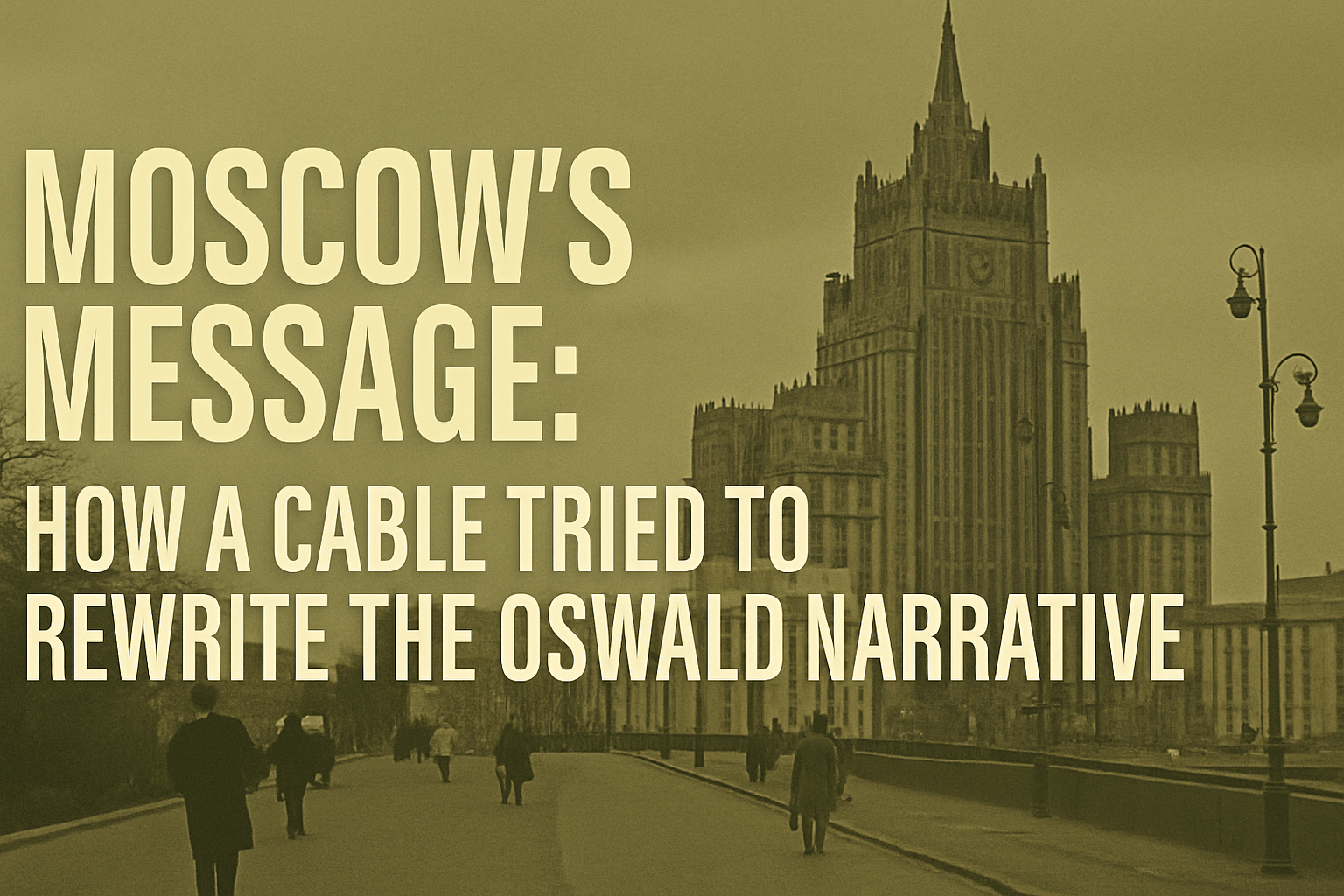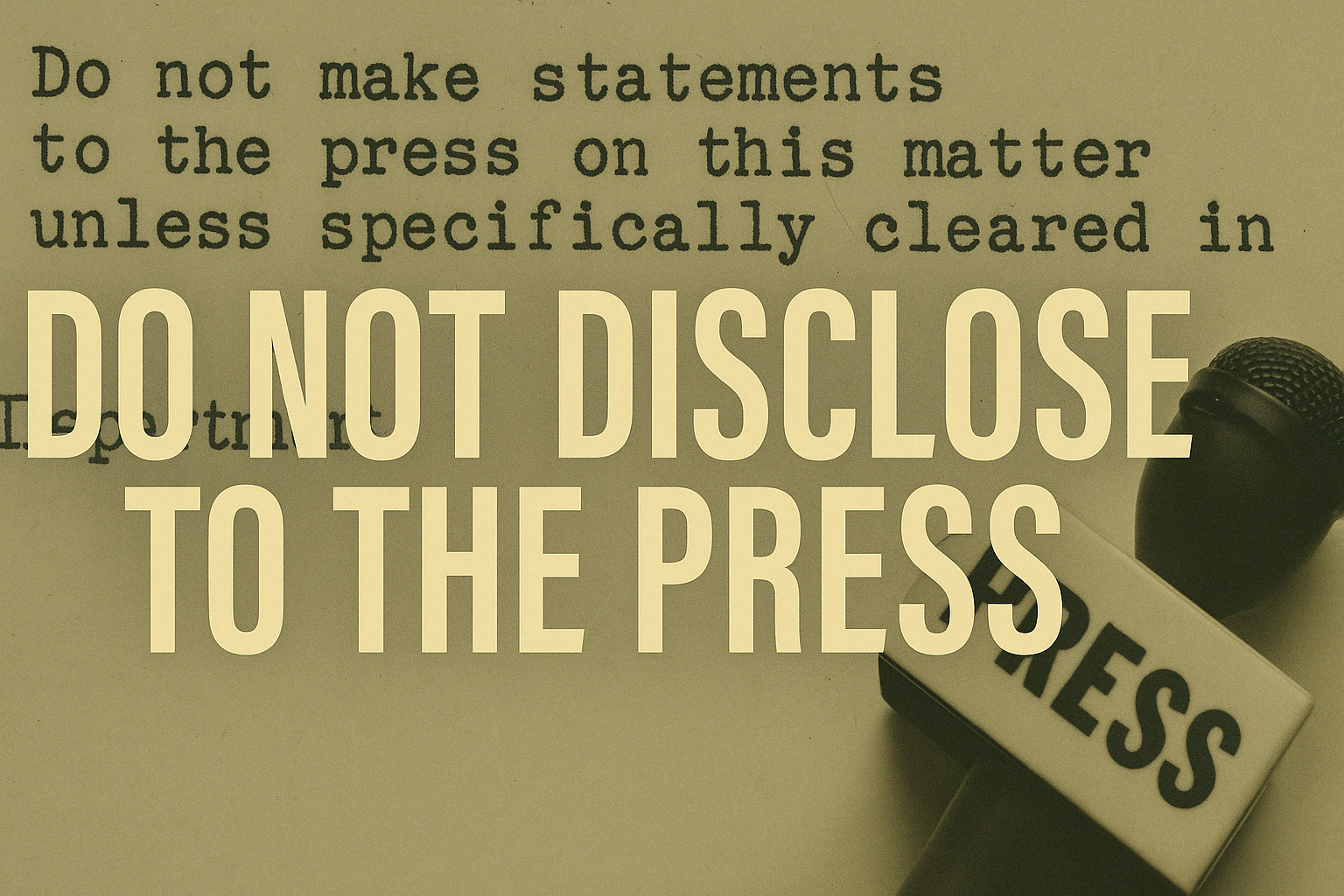Document 194-10002-10189, released in the 2025 JFK files, is a 1963 diplomatic cable from the U.S. Embassy in Moscow.
Sent shortly after President Kennedy’s assassination, the cable wasn’t an inquiry, warning, or investigation.
It was a defense. A carefully worded attempt to explain why no one in the diplomatic chain had done anything to stop Lee Harvey Oswald-before or after his defection to the Soviet Union.
🧾 The Cable That Wanted to Explain, Not Explore
In the days following the assassination, global scrutiny turned toward Oswald’s international movements-particularly his time in the Soviet Union.
The U.S. Embassy in Moscow was at the heart of that story. Oswald had walked into that very building in 1959 and declared his intent to renounce his U.S. citizenship and offer intelligence to the Soviets.
He left with his citizenship intact.
Now, four years later, the embassy offered a retroactive justification.
“Oswald was handled in accordance with prevailing regulations,” the cable insists.
Therein lies the purpose of the message: to position the embassy’s inaction not as failure, but as procedural correctness.
🛂 Oswald’s Reentry: Legal, Yes. Logical?
The cable walks a careful line. It acknowledges that Oswald made alarming statements, but repeatedly emphasizes that no formal steps were taken to renounce his citizenship, and that under U.S. law, the embassy could not deny him a passport or block his return.
But this bureaucratic shield misses the broader truth: Oswald didn’t just slip through the cracks-he passed through wide open doors.
Despite his background as a Marine with radar knowledge, despite his defection to a hostile state, despite his apparent mental instability, the U.S. processed him as any other citizen.
No extra screening. No special inquiry. Just a rubber stamp.
📡 The Problem With Following Protocol
What this cable reveals-perhaps more than it intended-is how much of Oswald’s journey was enabled not by conspiracy, but by bureaucratic inertia. He followed a path no one in the system felt responsible to challenge.
Even now, the cable doesn’t express regret. There is no acknowledgment of the context, the potential danger, or the proximity of Oswald’s Soviet history to his later actions. It is a memo that clears the embassy, not one that confronts the gravity of its role in history.
🤫 Quiet Language in a Loud Crisis
The tone of the cable is strikingly detached. Where public officials were facing angry citizens and investigative commissions, this document speaks in low-level administrative prose. It is not concerned with moral clarity. It is concerned with optics.
The cable wasn’t meant to uncover truth. It was designed to close questions before they were fully asked.
🔚 The End of a Paragraph, Not the End of a Story
Perhaps the most damning aspect of this cable is what it symbolizes: the early federal instinct, after the assassination, to reassert control through the appearance of order.
This wasn’t a revelation or a confession. It was a narrative patch-a “nothing went wrong here” press release, dressed up in diplomatic language.
History didn’t believe it then.
We shouldn’t believe it now.

